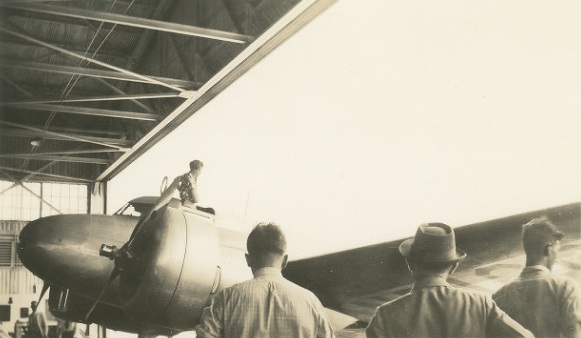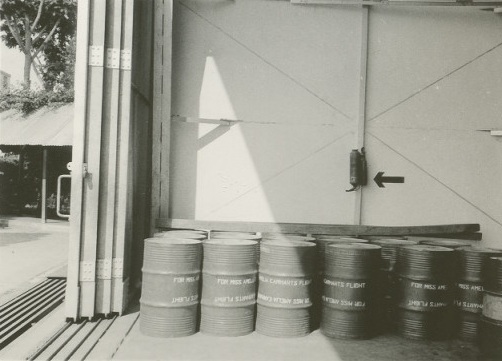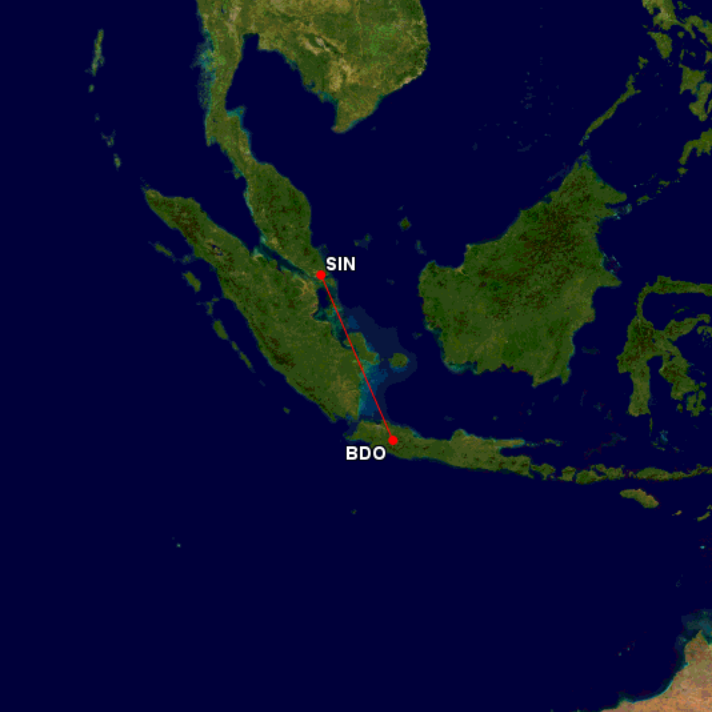

“From Singapore early in the morning, we headed for Java. Our course first lay over the open sea, then along the westerly shores of Sumatra, finally cutting deep across its southeast portion. In the first hour of flying we crossed the equator for the third time in our air voyage and definitely passed ‘down under’ into the nether world of Australasia. . .
“The landscapes of the southern hemisphere were beautiful to look upon. . . countless tiny islands, glowing emeralds in settings of turquoise. . . narrow ribbons of beach, separating the deeper green of their verdure from the exquisite turquoise tones that mark the surrounding shallow water, which in turn merge into darker blue as the waters deepen. . .
“After my plane had been comfortably put in its hangar and K.N.I.L.M. (a local organization, sister company to Netherlands Airline, famed K.L.M.) mechanics had begun their inspection.”
—Amelia Earhart


© 2019, Bryan R. Swopes
Just to be correct, the correct name of the USAF base in the Marianas on Guam is Andersen AFB, not Anderson AFB.
Thanks for the correction.
I really enjoy your blog and look forward to it every day. The series on Amelia Earhart is interesting not only for her flying and story telling, but also for the logistical arrangements that had to be made to enable her flights. It must have been a tremendous cost and effort to find adequate repair and inspection facilities in obscure locales and then pre-position aviation gasoline and other supplies in coordination with her arrival. And to do this in 1937 when communication and transportation infrastructure could vary greatly from place to place.
Thank you, Tony. Yes, I agree. It is an interesting story. I wish that the final outcome had been different. . . I really have to recommend Ric Gillespie’s FINDING AMELIA (2006, Naval Institute Press, Annapolis, Maryland, U.S.A.) The book included a DVD with more than 5,000 documents supporting his research.
Thank you for sharing this information on her around the world flight.
Yes it would have been a lot better if the ending was different. With all her support along the way why wasn’t there more Naval ships along her last leg to that tiny island ? And why didn’t they recharge the batteries for the directional finder ? They had plenty of time to recharge them.
TDiA questions why the U.S. Navy should have positioned ships along her route. There was no government interest in her purely civilian undertaking.
I agree with Denis. The navy should have been more proactive for this flight – at least in areas where they could. Why? Though this was a civil undertaking, she was a national aviation hero and a US citizen. She deserved at least some US government – Navy – support. By your reasoning, there shouldn’t have been any navy or Coast Guard effort to find her once she was considered lost.
Ms. Earhart did have a lot of support from the U.S. government including staffing and prepping the landing field at Canton Island, and positioning a U.S. Coast Guard cutter near by. (On her first attempt, the U.S. Army overhauled her Electra’s poorly maintained propellers at no cost.) But I disagree that they U.S. Navy should have positioned ships along the route. This flight was nothing more than a publicity stunt for profit. Certainly, any human being deserves some attempt at rescue, if possible, and assets are available. But it is unreasonable to expect the Navy to position ships across the Pacific Ocean (or Atlantic, Indian?) for the benefit of anyone who chooses to put themselves in a potentially dangerous situation. The expense would probably consume a major percentage of its annual budget. (You should recall that the United States was in the eighth year of the Great Depression.) The search effort by the U.S. Navy would not likely have been made for any other individual.
Legend, getting closer.